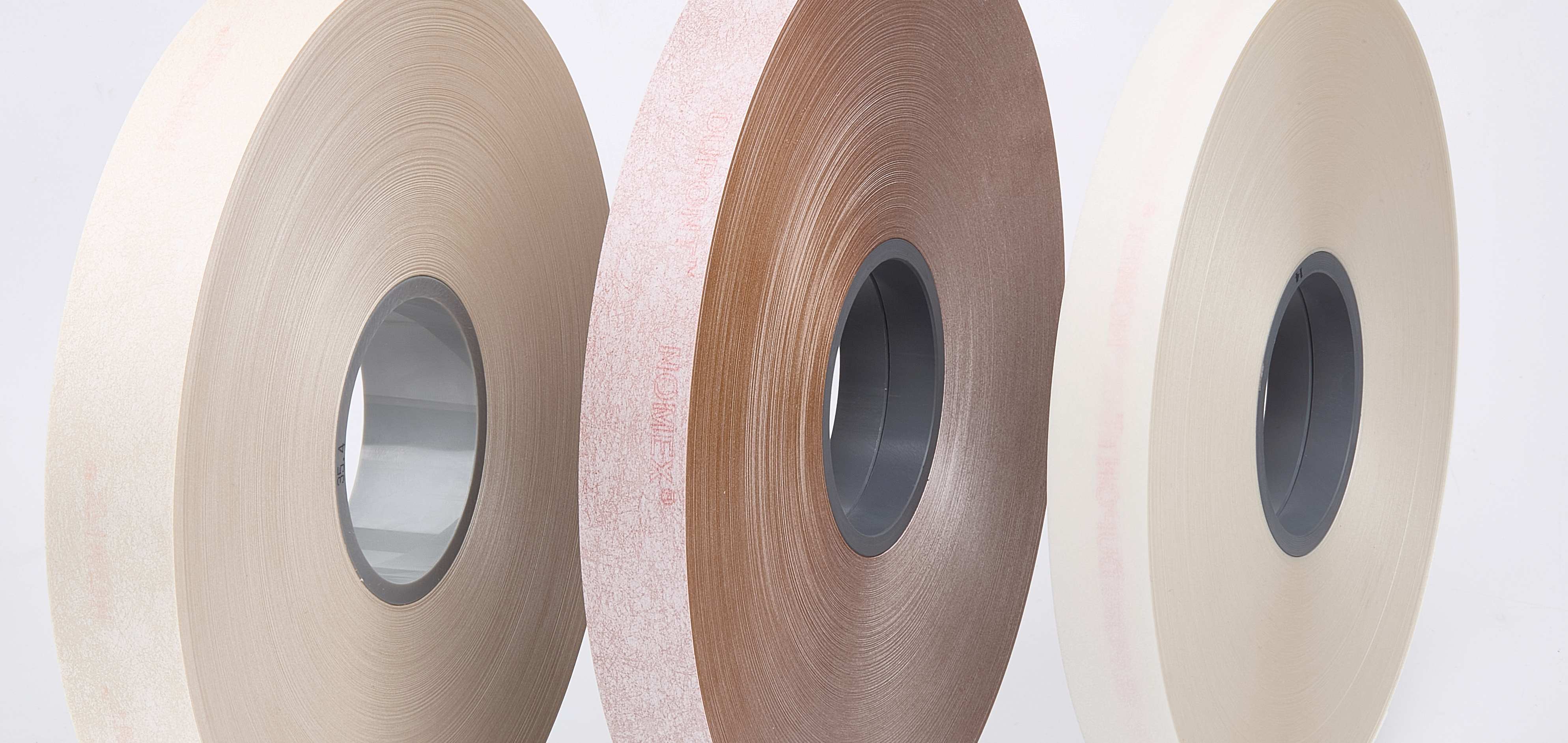In the design and manufacture of high-voltage motors, the performance of insulating materials directly affects the reliability, service life and operation safety of the equipment. As representatives of high-performance insulating materials, NHN, NMN, and NSN composite papers have shown significant advantages in the field of high-voltage motor insulation with their unique material structure and comprehensive performance. The following analyzes its core performance advantages and practical application value from multiple dimensions.
Excellent electrical insulation performance
High dielectric strength and corona resistance
NHN/NMN/NSN is a composite paper with a multi-layer composite structure, usually made by compounding polyester film and fiber paper through a specific process.For example, NMN is composed of polyester film and two layers of Nomex paper. This structure gives it a high dielectric strength and can withstand the strong electric field environment when the high-voltage motor is running. In the power frequency withstand voltage test, the dielectric strength of NMN lamination paper with a thickness of 0.17mm can reach more than 20kV, which can effectively prevent the risk of breakdown between windings. For the common partial discharge problem of high-voltage motors, the corona resistance of this type of composite paper is particularly outstanding. NHN composite paper (Nomex paper-polyester film-Nomex paper) can disperse electric field stress through the fiber paper layer under high-frequency pulse voltage, delay the erosion of corona on insulation, and extend the service life of the motor.
Stable insulation resistance and voltage fluctuation resistance
During changeable processes such as motor startup and load changes, the insulation material needs to withstand voltage fluctuation shocks. NSN composite paper (Nomex paper-PPS-Nomex paper) can maintain stable insulation performance when humidity changes or temperature fluctuates due to its high insulation resistance characteristics (insulation resistance ≥1×10^14Ω?cm under normal conditions), reduce the increase in leakage current caused by environmental factors, and is suitable for high-voltage motor scenarios with complex working conditions.

Outstanding mechanical strength and flexibility
Tear resistance and deformation resistance
During the operation of high-voltage motors, the windings will vibrate due to electromagnetic forces, and the insulation material needs to have tear resistance. The tensile strength of NMN composite paper can reach more than 150MPa, and the close combination of its fiber paper layer and film layer can effectively resist tearing or delamination caused by mechanical stress. For example, in the motor wire embedding process, the composite paper can withstand the friction and stretching when the wire is embedded to avoid insulation damage. This type of lamination paper has good flexibility. NHN composite paper can withstand 180° folding without breaking, adapting to the complex coil forming requirements of the winding, especially in the precision winding of multi-pole motors or high-speed motors.
Good heat resistance and environmental adaptability
High temperature stability and aging resistance
The heat resistance level of NHN/NMN/NSN lamination paper usually reaches H level (180℃) or higher. The Nomex paper used in NMN paper has the characteristics of high-temperature resistant aramid fiber and can be used for a long time at 220℃ without carbonization. This feature enables the composite paper to withstand the temperature rise of the winding during the operation of the high-voltage motor and avoid insulation aging caused by overheating. Experimental data show that after aging for 1000 hours at 180℃, the dielectric strength retention rate of NMN composite paper is still more than 85%. In addition, the lamination paper has strong tolerance to oils and chemical gases. The silicone layer of NSN paper has the ability to resist oil pollution and is suitable for motor scenarios that frequently contact lubricating oil (such as industrial drive motors), which can reduce the impact of chemical corrosion on insulation.
Process adaptability and economy
Easy to process and integrate with insulation system
NHN/NMN/NSN lamination paper can be slit, laminated or molded according to the design requirements of the motor. Its surface is flat and the thickness is uniform (tolerance ±5%), which is ideal for use with other insulating materials (such as mica tape, varnish) to form a multi-layer insulation system. For example, in the stator winding of a high-voltage motor, NMN paper can be used as interlayer insulation to build a complete insulation protection system together with slot insulation and interturn insulation materials. From a cost perspective, this type of composite paper has a higher cost-effectiveness than pure film insulation or ceramic insulation materials. Its standardized production process reduces the difficulty of processing, and its longlife characteristics reduce the frequency of motor maintenance, and the comprehensive cost advantage is significant.
Sui On Insulation's Professional Competence
Leveraging decades of industry expertise, Sui On Insulation specializes in high-voltage motor insulation using NHN/NMN/NSN lamination paper. Our reliable products and technical services enhance motor performance, mitigate operational risks, and drive the power equipment industry toward safer, more efficient solutions.